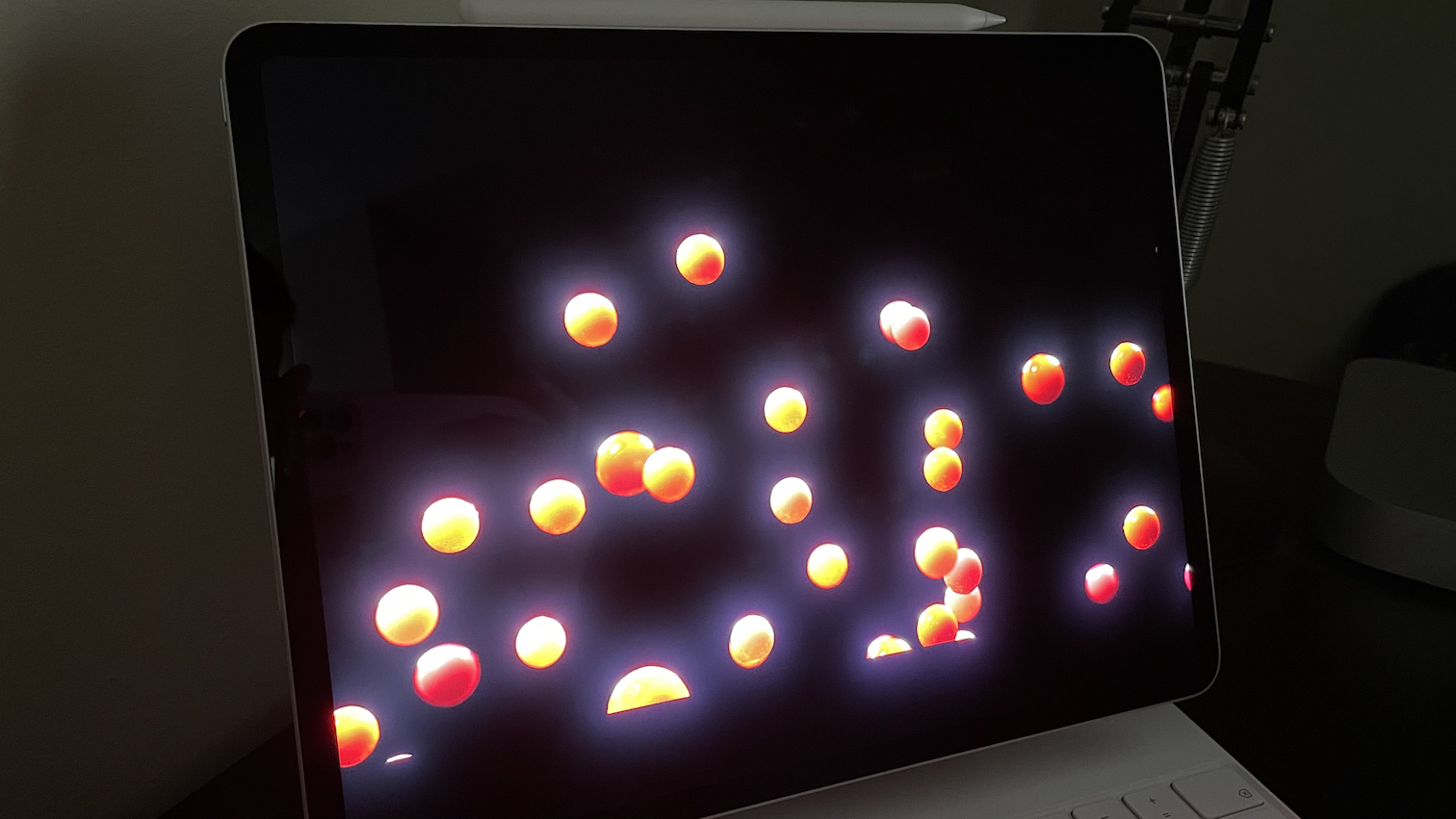
Reports suggest that despite the new 14-inch and 16-inch MacBook Pros sharing the same mini-LED display technology as the 12.9-inch iPad Pro, the new Mac computers are not obviously suffering "blooming," a phenomenon found on the iPad Pro.

The new MacBook Pros and the 12.9-inch iPad Pro consist of mini-LED technology, which uses dimming zones. These local dimming zones allow specific screen areas to turn completely dark when they're not needed, resulting in richer blacks and improved energy efficiency.
Unlike traditional displays, which control individual pixels, displays with dimming zones control separate zones rather than individual pixels. If one dimming zone is lit up, artifacts from it may be noticeable in neighboring zones with a black background, leading to "blooming," as shown below on the 12.9-inch iPad Pro.

Blooming is typically only noticeable when viewing black content or text and when viewed from the side. Apple has in the past addressed the phenomenon by saying the iPad Pro's display is designed to minimize its visibility. Given that the new MacBook Pros announced last week include the same mini-LED technology, some have been concerned about whether the new MacBooks will face the same issue.
According to users' reports and reviews, that doesn't seem to be the case. Brian Tong noted in his review of the new M1 Max 16-inch MacBook Pro that while blooming is still present on the new displays, it's only visible with "deep black backgrounds, and bright white text or a white logo is contrasting it." Additionally, Tong stressed that the blooming effect is exaggerated when recorded with a camera and that it's much less obvious when viewed with the naked eye.
New owners of the 14-inch and 16-inch MacBook Pro are also sharing their thoughts on the MacRumors Forums. Compared to the 12.9-inch iPad Pro, the new MacBook Pro makes better use of mini-LED and dimming zones. As one forum user wrote:
Another user shares the same thoughts, saying that despite the small instances of blooming, the new MacBook Pro displays are "fantastic."Overall I think the IPP 12.9 display is awesome but the XDR on the mbp is even better because when I play HDR content only the window portion is super bright - on the iPad everything just looks bright. You're not going to get gimped here on the display of the new mbp. well maybe the ghosting issue is annoying for some overall it is a fantastic display.
Michael Kukielka, also known as DetroitBORG, noted on Twitter that blooming on the new MacBook Pros is almost "imperceptible" compared to the 12.9-inch iPad Pro.Comparing the 12.9" iPad Pro and the new 16" MacBook Pro, the MacBook Pro is a bit better. Much less blooming, and the colors pop a bit more. That being said they are both amazing screens. When I first used the iPad I was really impressed by the screen. When I first used the MacBook Pro I was completely blown away. As a test I played a 4K HDR demo and the peak brightness, colors, and the realism is one of the best I have seen on any screen (not counting extremely high end TVs).
The Liquid Retina XDR display on the new MacBook Pros includes several new features, including higher sustained brightness for HDR content and ProMotion, allowing for a variable refresh rate of up to 120Hz. The 12.9-inch iPad Pro includes 2,500 dimming zones, and while it's not entirely clear how many zones are in the 14-inch and 16-inch MacBook Pros respectively, it seems that Apple has improved its display technology with its new high-end Mac computers.
Article Link: Reports Suggest Mini-LED 'Blooming' Effect on New MacBook Pro Displays Not an Issue
Last edited:

